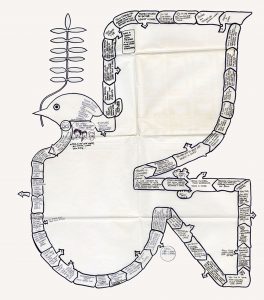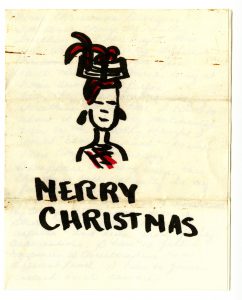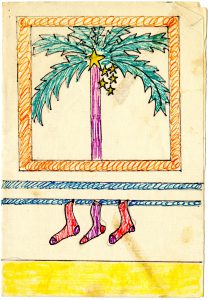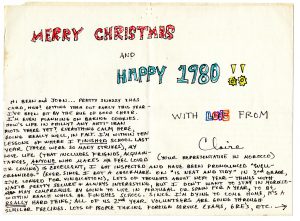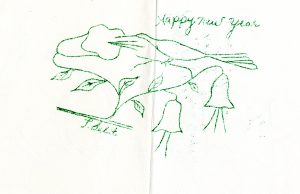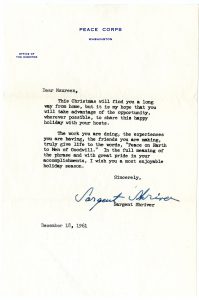B. Paxton is an anthropology graduate student in Dr. Adrienne Pine’s Craft of Anthropology I course (ANTH-601). This blog post was written in fulfillment of a course assignment.
In 1966 President Lyndon B. Johnson, addressed Congress and called for the establishment of a “reverse peace corps”, in which volunteers would come from other countries to teach and assist in development projects in the United States as part of the War on Poverty. Congress agreed to fund a pilot program from the Peace Corps budget, with additional costs covered by organizations and school boards in areas where volunteers were placed. In the summer of 1967 the first group of volunteers arrived. The program was named Volunteers to America (VTA), and Neil Boyer was designated program director. Despite the program’s low operating cost and the fact that a majority of sites at which volunteers were placed wished continue the program, Congress not only declined to fund it, but also passed a ban on similar programs being funded out of the Peace Corps budget. The program closed in 1970. The rise and fall of the VTA program provides an interesting case study in the framing of national service in the United States.
The Neil Boyer collection in American University’s Archive documents the short but rich history of the program. Boyer donated the collection to the university in 2018. It contains official documents, memos, records from State Department and Congressional Hearings; training and promotional materials; two theses; and letters between Neil Boyer and program volunteers.

A few of the letters between Neil Boyer and VTA Volunteers.
In my two years as an Americorps member, I never heard about the VTA. Perhaps, given its short run and abrupt cancellation this is not surprising. However, as I looked through the collection, I was struck by how similar many of the program’s issues and participants’ experiences—60 years later—were to my own. The daily log (a record of day-to-day overall program activity) records volunteers with unrealistic expectations and concerns about site or project supervisors. Letters between Boyer and volunteers reflect the reality of national service, with passionate people who want to effect change trying to manage big workloads with little pay, while also struggling to reconcile the idealistic stories they had heard about America with the poverty and discrimination they found.
In the collection, there are inspiring stories of success, such as a volunteer placed in New York City working to develop and expand block organizations and help communities to communicate their needs to the city. However, there is also frustration and sacrifice. An Israeli volunteer expressed in a report the growth and insights that she gained from her position, but also her intense loneliness and concerns about the longevity of the programs she had started, because of community divisions. One volunteer joked in a letter about going to bed filled with excitement of over new ideas for teaching, but then the joy of going back to asleep the next morning since it was a snow day and she was exhausted. Several volunteers in teaching positions expressed how they been able to connect with students and teach them about their culture, but also concerns that the schools or districts they were placed with did not see them as fully qualified despite certification and previous experience in their home countries.
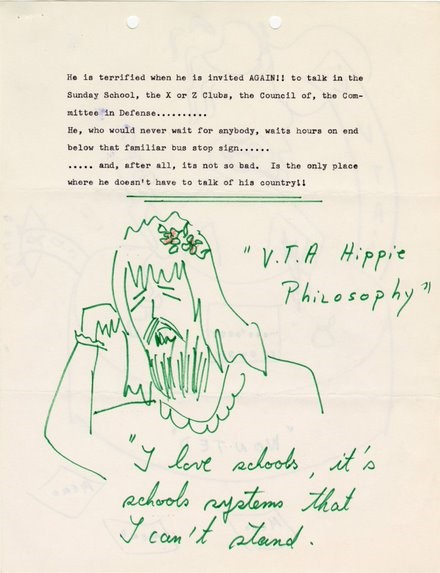
A drawing by a volunteer about perceptions of the program and frustrations with education.
Finances were another matter of frequent concern. A volunteer’s living stipend was $200 to $300 per month paid by their placement organization or school district, which was challenge for many volunteers. One volunteer had to ask for donations when she moved into better living situation, because she could not purchase basic household items like pots and pans. They also experienced discrimination and inequality directed both toward the communities and students they worked with and towards themselves. An Argentinian volunteer was accused of being a “card-carrying communist” by a volunteer from another program and African volunteer was racially profiled by police.
These dualities of passion/pressure and ideals/reality are at the heart of national service. Peace Corps and later Americorps were founded on ideals of people helping people at a community and individual level. The words of David Busch, whose correspondence with Boyer and graduate thesis are included in the collection, describe those contradictions:
The VTA was the most daring effort to fully realize the Peace Corps’ cosmopolitan
alternative to standard development policy…[It] imagined the “community” in
community development not as a set boundary of local particularities, but as a
nexus of relations that transcended national borders. The goal of the VTA was to forge a transnational dialogue across local politics and traditions, combat notions of superiority
embedded in American post-war development thinking, and encourage cross-cultural
exchange in American communities. (Busch, 2018 pg. 671)
Though the VTA was a short-lived program, the VTA collection encapsulates the experiences, ideals, and reality of national service in the United Sates.

